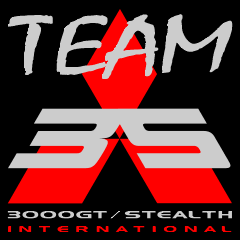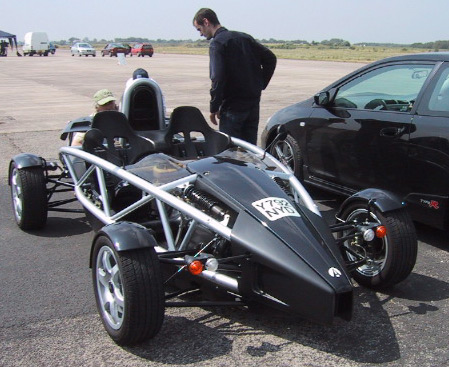
New York - Munich - Portland - San Francisco - Seattle - Stockholm - Vancouver - Zurich

New York - Munich - Portland - San Francisco - Seattle - Stockholm - Vancouver - Zurich
Jim Matthews: Second track day experience! July 27, 2002
Elvington Airfield, North Yorkshire, England

Clipping an Apex. Photo courtesy of Rob G., www.speedyseven.com
{ Click to see a bigger image }
![]()
IntroductionMy second ever track event was held at the same location as my first (though organized by a different company), Elvington Airfield near York in North Yorkshire, England. The course was marked out with cones and was approximately 2.5 miles in length (a different layout than last time). It was a beautiful, sunny day with temperatures ranging from 60 degrees in the morning to about 75 degrees in the afternoon. The event was non-competitive and an "open pit" policy allowed drivers to enter and exit the track at any time, though the nearly 50 cars in attendance were divided into three classes for the first hour as drivers learned the track. It cost $135 for 7.5 hours of track time (9am - 5pm with 30 minutes off for lunch) plus $25 for helmet rental (motorcycle helmets were acceptable, so next time I'll use my own!) and $50 for one-on-one instruction. |
![]()
![]()
|
EvaluationBrakes Poor
brake performance (power, fade and longevity) from worn R4-S pads
made my previous event a frustrating experience. This time, however,
the Stealth was well prepared with fresh Porterfield R4 racing pads
clamping cryogenically-treated rotors, and I couldn't be more pleased!
I had no idea that pads could make such a difference and am now
completely satisfied with their performance. Braking was repeatedly
hard, straight and without even a hint of mushiness or fade, and
after such a long event, I was surprised to find that the pads still
have almost half of their material remaining (well charred, however)
and that the rotors, while slightly grooved, seemed to withstand
the extra load just fine (no warping at all). The braided stainless
steel brake lines sourced from Sweden via Mikael Kenson continue
to work flawlessly as well, delivering the fluid a speed shop in
Germany charged me a fortune for last summer. I have Motul ready
to go in, but there's no sign that I need to do anything at this
point. The caliper piston seals are shot, and I'll have them replaced
soon (I have the parts but didn't bring my 60 Hz air compressor
to Europe). Engine The
engine was configured the same as last time, with the AVC-R set
to 1.00 with a 64% BADC. Power was not a problem, and I was able
to out-accelerate most of the other cars on the track (notable exceptions
include a modified RX-7, a 550 bhp Skyline GT-R V-spec and a few
specialized trailor queens). It's interesting to note that my gas
mileage was among the best of the participants. I ran all day on
one tank, while some made several runs for fuel (the Skyline was
using a quarter tank each session!). Suspension The
stock suspension was set to Sport (I discovered that ECS reverts
to Tour mode when the car is restarted) and the brand new Michelin
XGT-Z4 tires were inflated to 39 psi front and 35 psi rear cold,
which rose to 46 psi front and 40 psi rear after a typical session.
Traction was certainly an issue when trying to carry speed through
corners, and while race rubber would surely improve lap times, I'm
more interested in learning how the car performs as configured for
the street. Also, chances are always good that the track will be
wet here in the UK, and all-season road tires may offer more grip
than racing tires. On the other hand, these 245/45ZR17 XGT-Z4s are
$200 a pop, far more than Kuhmos. At any rate, this long event consumed
about 1/3 of the tread from the front tires and perhaps 1/6 from
the rears. Wear was very even, and the sidewalls showed no indication
of rollover. Summary What a blast! I think there are few cars out there that are so comfortable and safe yet so fast and capable. A real pleasure. |
![]()

Dodge Stealth, Lotus Elise, Caterham 7, BMW M3

Skyline GT-R V-Spec, Dodge Stealth, A.C. Cobra
427

Ariel Atom (street legal!)

Lancia Delta (famous rally car)
![]()
|
|
Article & Track Photos © 2002-2004 Jim Matthews, All Rights Reserved.
Other Images ©1995-2004 Bob Forrest, All Rights Reserved.